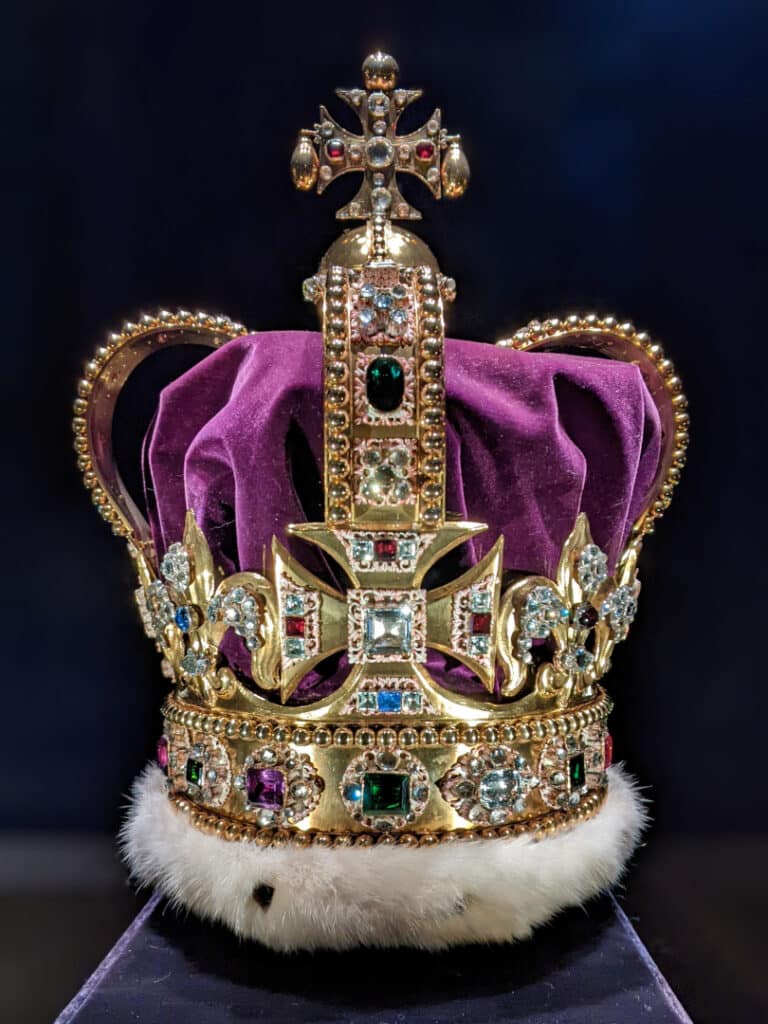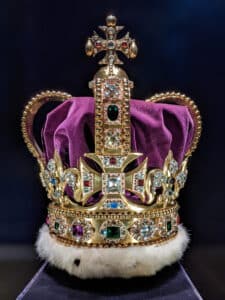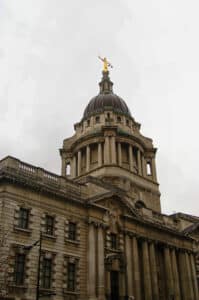Detained at His Majesty’s Pleasure
 11
11Aug

Did your ancestor suddenly disappear from records? Your ancestor’s wife was listed as “Wife” in a census record, not “Widow,” but he can’t be found. Perhaps you can find him with the family in the next census, or he is never seen again in census records. Where was he? What was he doing? You might want to consider that he (or she) may have been in prison or, maybe, transported.
We have all heard of the harsh punishments for criminals in the Victorian age and earlier but what does it mean to be “Detained at His Majesty's Pleasure”? It is a legal term referring to the indeterminate sentences given to some prisoners. The sentence was often given for those considered to be “criminally insane,” juvenile offenders and those at risk of re-offending.
Whether your ancestor was detained at His Majesty’s Pleasure, transported, or given a sentence for a determined time, you will find that there is a wealth of records available on the major genealogical websites for criminals in the United Kingdom, some giving insight that can be found in no other type of record. Here are just a very few of the many record collections you might find helpful:
- England and Wales, Crime, Prisons & Punishment, 1770-1935. findmypast.com. Contains full details of crime, court, and sentence. On just one page of the collection, you may find charges including counterfeiting, housebreaking, concealing the birth of a child, bigamy, rape and manslaughter. Depending on the prison location, you may even find a photograph of the criminal.
- Newgate Prison Calendar, Vols 1&2. findmypast.com. Newgate was England’s most notorious prison. This record collection gives great detail of crimes and criminals.
- Devon, Plymouth Prison Records 1832-1919. findmypast.com. This is just one of the many county specific collections.
- Bedfordshire, England, Petty Sessions, 1854-1915. ancestry.com. Another county specific collection.
- Criminal registers for Middlesex, 1791-1849. familysearch.org. A county specific collection for one of the most populated counties.
- Bonded Passengers to America, 1616-1775. ancestry.com
- Australia, Convict Records Index, 1787-1867. ancestry.com.
- Appropriation list of female convicts transported to Van Diemen's land, 1831, 1834-1836. familysearch.org
- Prison Hulk Registers. findmypast.com. A collection of records for 13,300 prisoners held on prison ships, known as Hulks. The ships were used that were no longer fit for battle but were still afloat. The conditions were terrible for these prisoners.
Lesser degrees of criminals/scoundrels
Some of our miscreant ancestors and relatives may not have been considered hardened criminals but they certainly fit the descriptions of scoundrels. Here are a few ways to find your family’s scoundrels:
British Newspaper Archive
The British Newspaper Archive collection may be found on www.findmypast.com, with premier subscriptions and on a separate website, www.britishnewspaperarchive.co.uk. If you would like to do a brief focused search for an ancestor, the British newspaper archive may be a more economical way to search. At the present time, February 2023, a one month subscription costs less than $16.
Here’s an example of a scoundrel found in the newspapers on www.findmypast[1]:
Thomas Crossley, scripture reader, aged 33 years, about 5 feet 11 inches high, dark hair, whiskers and eyebrows, has a scar on the left cheek from an abscess, brown deep sunk eyes: absconded about the latter end of September, 1867, in company with Emma Gerrard, about 18 years of age, and had with him a little boy (his own child) about 3 years of age: left his wife and 3 children chargeable to the union. Two Pounds Reward will be paid for his apprehension.
While you might not want to claim Thomas Crossley as your ancestor, the amount of detail found in the above report could be of great family history benefit to you and there are few other records that would give such a thorough physical description!
During your search of British newspapers, don’t forget to check the Illustrated Police News. It is known as the original tabloid newspaper but does have good coverage of headline news and the illustrations are fascinating. For example, the front page for Saturday August 17, 1882 includes an illustration of a shipwreck with eleven deaths of people devoured by sharks[2]. The illustration includes a woman being swallowed by a shark while holding an infant in her arms!
Don’t forget to search in smaller collections
As well as criminals in the U.K., the black sheep ancestors website covers the U.S. and Canada. A fascinating website covering names, locations and crimes and, in some cases, gives very gory details of murders and other crimes. Be careful with this website if you are prone to nightmares.
The Old Bailey has been the central criminal court in London since 1674. The present building stands on the site of the old Newgate Prison. The website includes the Proceedings of the Old Bailey, 1674-1913. It is a fully searchable edition of the largest body of texts detailing the lives of people ever published, containing 197,745 criminal trials held at London's central criminal court.
You can search by the name of the criminal or by the name of the victim. Using the resources on the Old Bailey I was able to find my second great grandfather, Albert Minting, as a victim of a theft of a coat by a drunken woman. Included in the information regarding Albert Minting is his address, his father’s name and his father’s occupation. The information found on the website actually quotes Albert’s words as he, a nine year old boy, gives evidence at the trial.
[caption id="attachment_8125" align="aligncenter" width="199"] The Old Bailey[/caption]
The Old Bailey[/caption]
Don’t forget to include Google and Youtube in your searches
Researching my Minting ancestors has been a source of many interesting findings. A search for the family name of Minting, using the Google search engine, lead me to a spousal abuse case - A 17 year old woman named Elizabeth Holsen, attended court, having charged her husband, George, with abuse. She was described as having been brutally beaten by her 18 year old husband. Attending court with her was her father, a man named John Minting, and her 3 month old child. The newspaper report shares John Minting’s statement, which included his description of the murder of another of his daughters, Mary. Putting together clues from the article on Google lead me to find a marriage record recording the marriage of Elizabeth Minting and George Olsen (not Holsen) in the parish of St. Anne, Soho, during January of 1820. John Minting, Elizabeth’s father had signed as a witness to the marriage. The marriage record, sadly, proved that John Minting, my third great grandfather had lied as he had said, under oath, at the trial for George Holsen/Olsen, that the young couple had married “clandestinely”, which his signature on the marriage entry proved was not true!
Staying with my Minting relatives, the search for the murder of John Minting’s oldest daughter has led to many resources, including YouTube. The full newspaper report of the murder of Mary Minting by her bigamous husband, dated 14 February 1818, can be found on YouTube[3]. You might not have much success is the family you are searching for is Smith or Jones, but if you have an unusual name, give Google and YouTube a try.
Be Prepared
Be prepared for some surprises when you start digging in to criminal ancestors. My Adams family line has been firmly established in London from the 1700s until now. While I was growing up I had heard rumors about some distant family members with shady reputations. When I started digging around to find answers to my questions about the shady relatives, this is what I found:
The Clerkenwell crime syndicate, also known as the Adams family or the A-team, is an English criminal organization, allegedly one of the most powerful in the United Kingdom. Media reports have linked the Adams family to around 25 murders and credited them with a wealth of up to £200 million[4].
There are thousands of individuals with the name Adams in London and I haven’t made any actual connections through my research to the Clerkenwell crime syndicate, although I do have ancestors who lived in Clerkenwell. Hopefully, the A-team members are only very distant relatives!
Remember
As was mentioned at the beginning of this blog, punishments were often harsh for quite minimal crimes. Here’s an example taken from Devon Social and Institutional Records found on www.findmypast.com:
- Samuel Endicott, aged 14, of Bamford Speke, found guilty of stealing 1 faggot of wood valued 3 pence. Committed to reformatory school dated 25 April 1882[5].
While we would rather that our ancestors weren’t recorded as criminals, their crimes may have been minor, like Samuel Endicott’s crime, and through the criminal records we can gain a wealth of information.
The experienced researchers at Price Genealogy can help you with your family history research, which, you never know, may lead you to an ancestor or two with less-than-ideal reputations.
By Lindsey
[1] British Newspapers Collection. www.findmypast.com
[2] Illustrated Police News. www.findmypast.com
[3] The murder of Mary Minting by William Haitch on 14th Feb 1818. www.youtube.com
[4] Clerkenwell crime syndicate. https://en.wikipedia.org/wiki/Clerkenwell_crime_syndicate
[5] Devon Social & Institutional Records. www.findmypast.com
Crown: Sir Robert Viner, 1st Baronet, Public domain, via Wikimedia Commons https://commons.wikimedia.org/wiki/File:Saint_Edward%27s_Crown.jpg
The Old Bailey: Txllxt TxllxT, CC BY-SA 4.0 <https://creativecommons.org/licenses/by-sa/4.0>, via Wikimedia Commons https://commons.wikimedia.org/wiki/File:London_-_Old_Bailey.jpg
